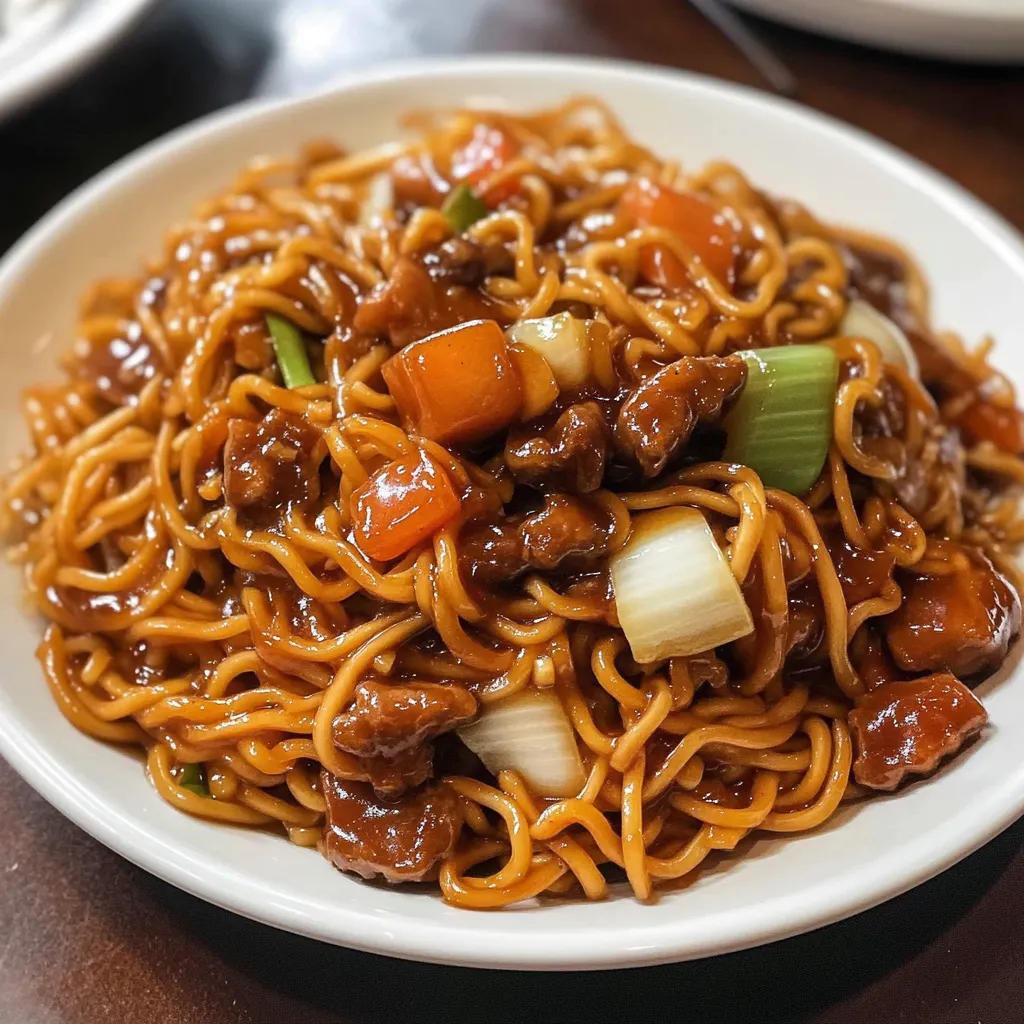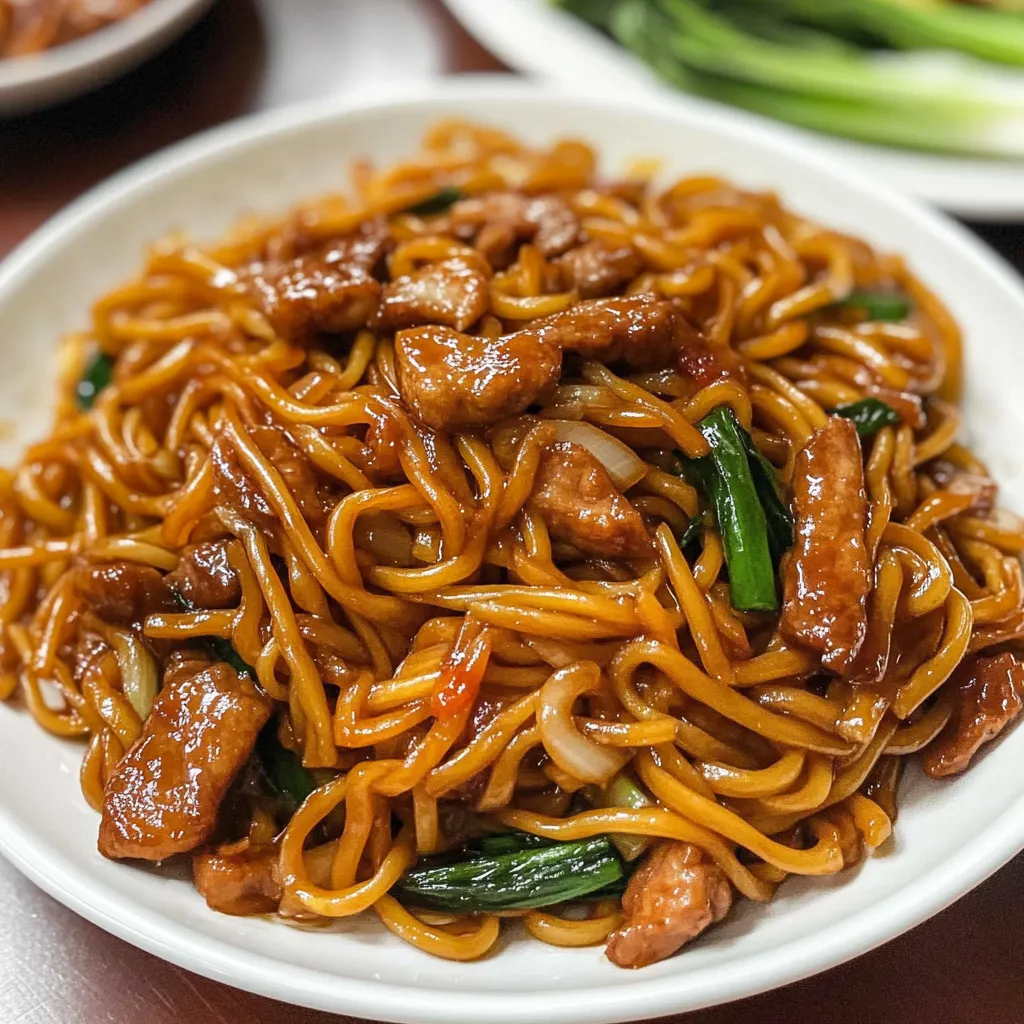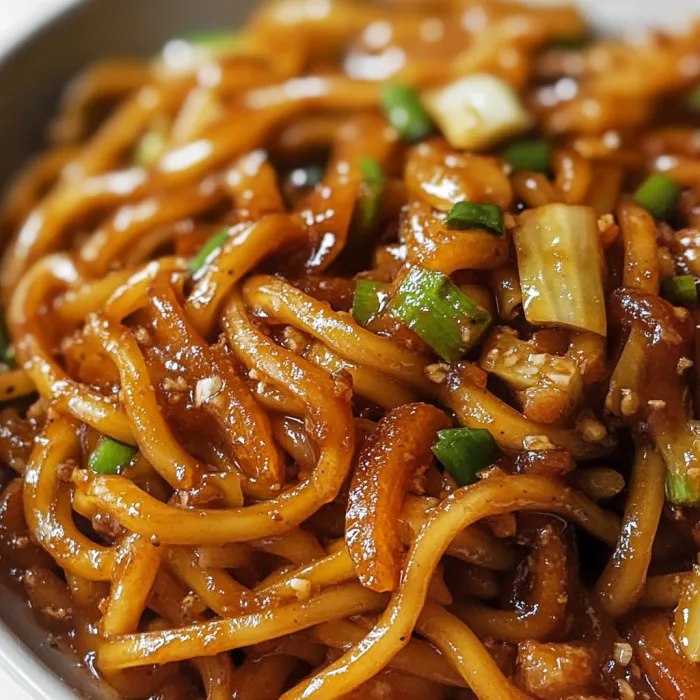 Pin it
Pin it
This quick and easy Shanghai fried noodles recipe transforms chewy noodles, tender pork, and crisp vegetables into a restaurant-quality meal in just 30 minutes. The savory sauce coats every strand, creating a delicious weeknight dinner that tastes like it came straight from a Chinese restaurant.
I first made these noodles when my family was craving takeout but our budget was tight. Everyone was amazed at how authentic they tasted, and now this dish appears on our dinner table at least twice a month.
Ingredients
- Fresh wheat noodles: the authentic choice with perfect chewiness but udon works well too
- Pork loin or pork belly: provides essential protein and savory flavor
- Napa cabbage: adds crunch and lightness to balance the rich sauce
- Shiitake mushrooms: deliver earthy umami depth that elevates the dish
- Green onions: bring brightness and color contrast
- Garlic: creates an aromatic foundation for the entire dish
- Dark soy sauce: provides color and rich flavor
- Regular soy sauce: adds essential saltiness
- Oyster sauce: contributes complex savory sweetness
- Chinese black vinegar: balances with tangy acidity
- Shaoxing wine: brings authentic depth but dry sherry works too
- Cornstarch: thickens both the marinade and sauce to perfect consistency
Step-by-Step Instructions
- Prepare the Pork:
- Slice pork thinly for quick cooking and maximum tenderness. Mix thoroughly with marinade ingredients ensuring each piece is coated. Let sit for 20 minutes at room temperature to allow flavors to penetrate and cornstarch to tenderize.
- Mix the Sauce:
- Combine all sauce ingredients in a small bowl stirring until sugar dissolves and cornstarch is fully incorporated with no lumps. This balanced sauce combines salty, sweet, tangy and umami elements.
- Cook the Noodles:
- Blanch noodles in rapidly boiling water for exactly 2 minutes until just al dente. Immediately rinse under cold water to stop cooking and remove excess starch that would make noodles stick together.
- Stir Fry the Base:
- Heat your pan or wok until very hot before adding oil. When oil is shimmering add garlic and marinated pork spreading pieces out to maximize contact with the hot surface. Cook until pork is mostly done but still slightly pink.
- Add Vegetables:
- Introduce cabbage, mushrooms and green onions to the hot pan. Stir constantly while cooking until vegetables just begin to soften but maintain some crispness for textural contrast.
- Combine and Finish:
- Add drained noodles and prepared sauce to the pan. Toss continuously using tongs or chopsticks to ensure even sauce distribution. Continue cooking until sauce thickens and coats noodles with a glossy finish.
 Pin it
Pin it
My absolute favorite ingredient in this dish is the Chinese black vinegar. I discovered it years ago in a tiny Asian market and its complex tanginess completely transformed my home cooking. My daughter now requests these noodles for her birthday dinner every year.
Storage Tips
These noodles keep beautifully in an airtight container in the refrigerator for up to 3 days. To reheat add a small splash of water and microwave covered or gently warm in a pan. The flavors actually deepen overnight making leftovers sometimes even better than the fresh dish.
Vegetarian Adaptation
For a delicious meatless version simply omit the pork and double the mushrooms adding firm tofu cubes if desired for protein. Use vegetable stock instead of chicken stock in the sauce. The dish maintains its satisfying texture and depth of flavor even without meat.
Cultural Context
Shanghai noodles or cu mian originated as a humble street food in eastern China known for their chewy texture and savory sauce. Traditional versions often include dark soy sauce for the signature color and simplicity that highlights the quality of fresh noodles. This dish represents the everyday comfort food of Shanghai rather than elaborate banquet cuisine.
 Pin it
Pin it
Frequently Asked Questions
- → What type of noodles can I use?
Fresh wheat noodles are ideal, but you can substitute with udon noodles for a similar texture.
- → Can I replace pork loin with another protein?
Yes, you can use pork belly or even chicken as an alternative protein for this dish.
- → Is there a substitute for shiitake mushrooms?
Yes, button mushrooms or cremini mushrooms work well if shiitake mushrooms are unavailable.
- → What can I use instead of Shaoxing wine?
Dry Sherry or rice vinegar are good substitutes for Shaoxing wine in this recipe.
- → How do I prevent the noodles from clumping?
After blanching the noodles, rinse them under cold water and ensure excess water is shaken off before stir-frying.
